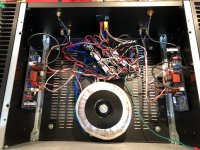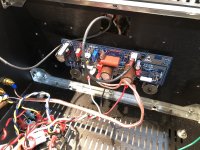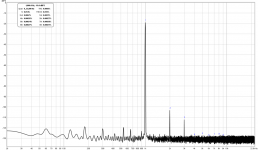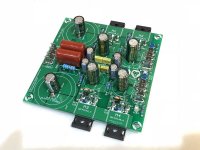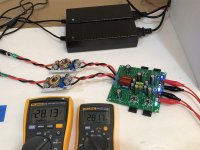X,
I'm relieved this comes out so well..... you are never quite sure even after hours at the simulator, standing for ever in the shower, and laying in bed counting sheep. I build very little these days, motivation is not so strong, but I love the brain snaps these amps deliver.
I have to say that the Nelson Pass sliding CCS is one of the cleverest things I have ever seen, and the sound of this amp much comes back to the infrastructure which supports the output stage. Thanks Nelson!
And of course, thank you X, and thank JPS!! You made this idea come to life, this is important to me, I commend this amp and all the hard work from X and JPS to the members of DIYaudio. I hope it stands with all of Nelson's outstanding amps in this forum.
Cheers,
HD
I'm relieved this comes out so well..... you are never quite sure even after hours at the simulator, standing for ever in the shower, and laying in bed counting sheep. I build very little these days, motivation is not so strong, but I love the brain snaps these amps deliver.
I have to say that the Nelson Pass sliding CCS is one of the cleverest things I have ever seen, and the sound of this amp much comes back to the infrastructure which supports the output stage. Thanks Nelson!
And of course, thank you X, and thank JPS!! You made this idea come to life, this is important to me, I commend this amp and all the hard work from X and JPS to the members of DIYaudio. I hope it stands with all of Nelson's outstanding amps in this forum.
Cheers,
HD
Very nice to see some great results from the initial testing. Kudos to Hugh, X, and JPS for their efforts!
Now looking forward to pics of the second channel up and running, and then some listening impressions too... (Yeah, I understand it's late in the US, but would X sleep on this unfinished? Nah, don't think so)
Now looking forward to pics of the second channel up and running, and then some listening impressions too... (Yeah, I understand it's late in the US, but would X sleep on this unfinished? Nah, don't think so)
I will pot the only black to NOT the mirror image. Please use the mirrorimage for Iron transfer!
Spelling ERROR
I meant I will post! The mirror image for iron transfer you find at post #266
Please open it with paint (It was created with paint) after print set up and chose 75% for the correct size.
X nice work, I believe these amp remain in these case, the previous will be retired.
Stereo amplifier assembled:
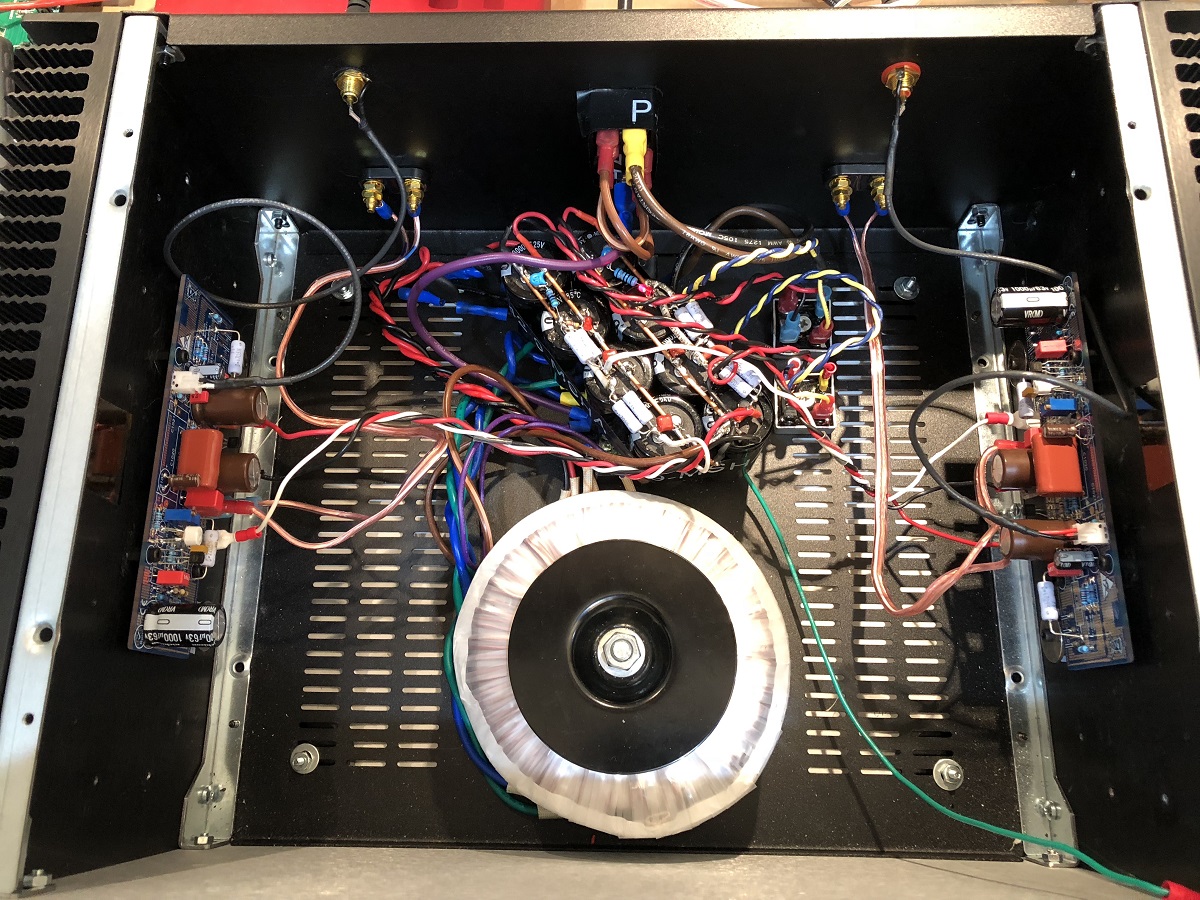
Right channel closeup, notice the nickel coins used for the MOSFET washers (perfect size and thickness to allow use of 10mm M3 hex cap screws to fasten MOSFETs to UMS heatsinks without threads bottoming out. Hex cap screws and Bondhus ball drivers are key to allow easy installation with angled screw driver.
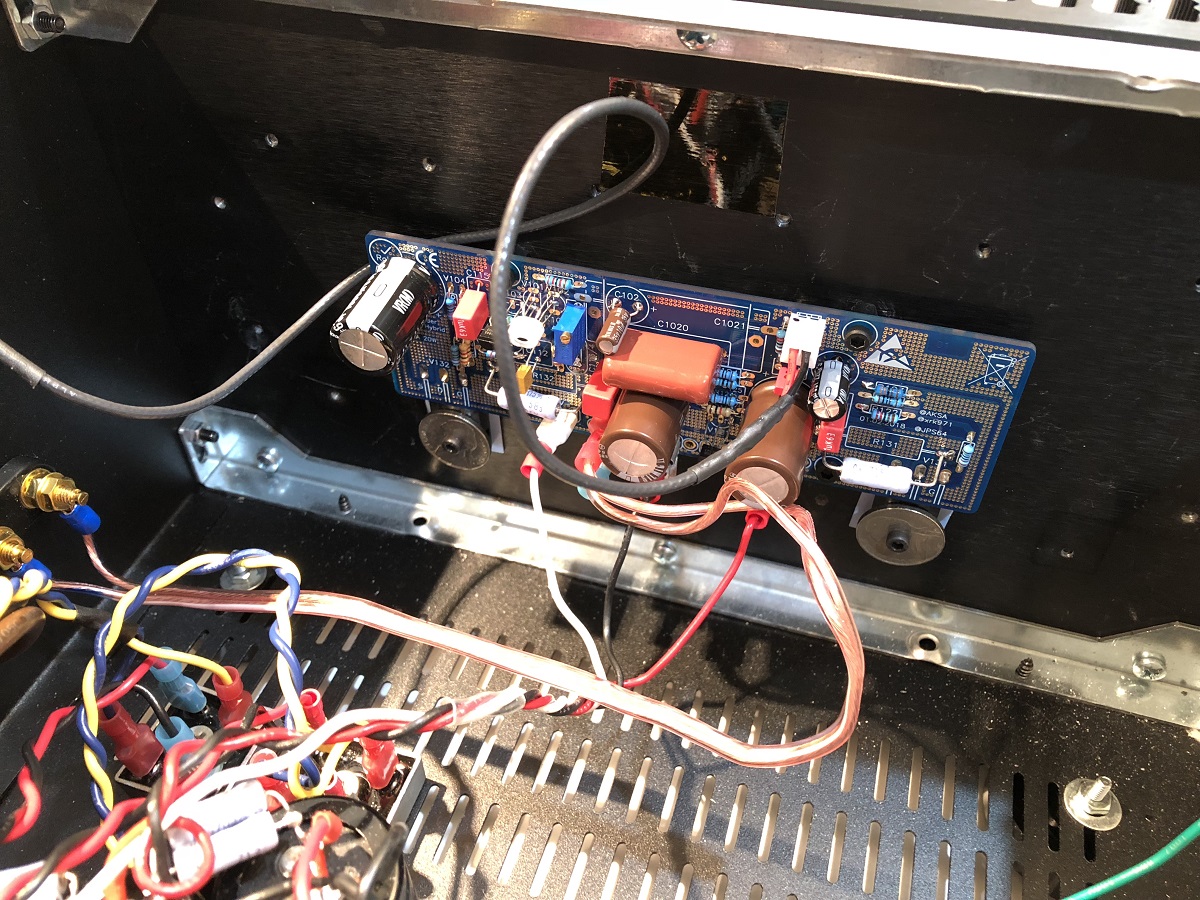
I got the stereo pair (right channel) installed and tested it and it measures just about the same as the left channel, even a bit lower THD at 0.0066%. The PSU under load of both channels shows a little ripple at mains frequencies and harmonics, but still very low. Here is the FFT for 2.79vrms into 8ohms:
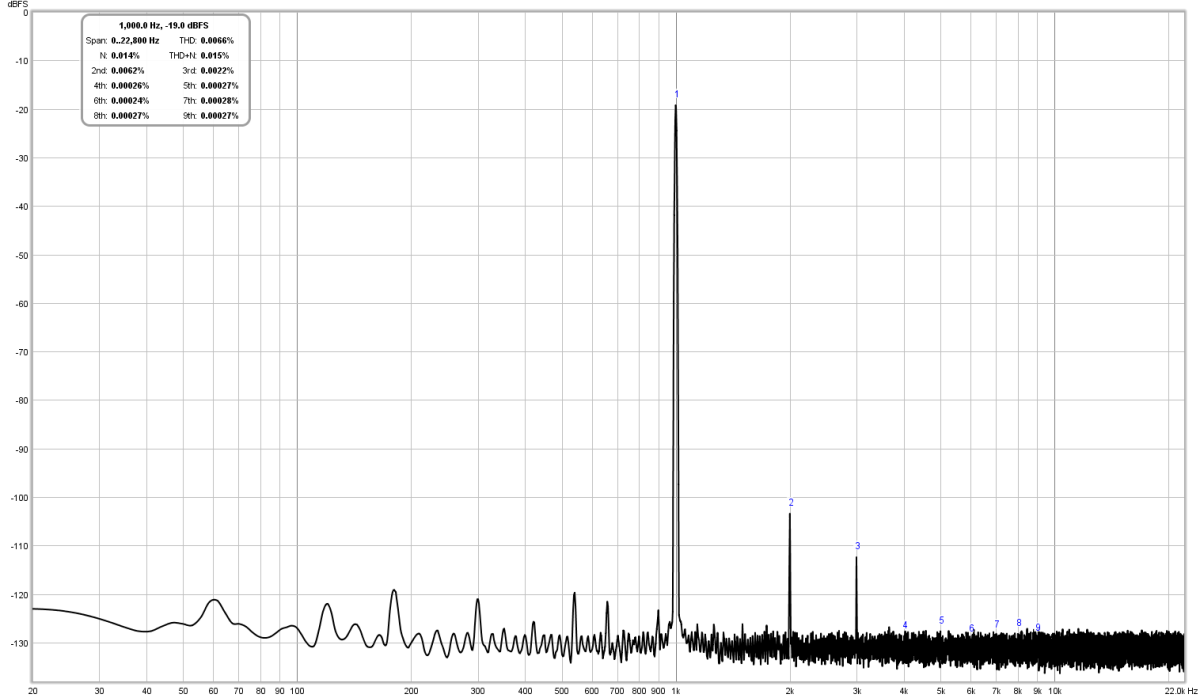
So I have been listening for the past 2.5hrs with known tracks and the amp sounds very nice. The sound stage and imaging is superb - I don't think I have heard Anne Bisson's September in Montreal sound quite as good before. She appears to be actually present in the room when I close my eyes - the stereo image is very lifelike and real - floating and with a 3 dimensional presence. I am using my usual reference speakers - the Scan Speak 10F/8424-RS225 FAST with transient perfect passive crossovers. These are not efficient (82.4dB at 2.83v and 1m) and were very adequately driven to good loud SPL's without strain. I will do some more listening and report back for long term listening but so far, Norah Jones, Fleetwood Mac, Rebecca Pidgeon, Tous Les Matin du Monde sound track, and Anne Bisson all sound very very good. The amplifier sounds very balanced and articulate. It is able to reproduce piano without distortion - as I think piano is one of the hardest to recreate properly. But the spatial imaging and soundstage are superb.
Right channel closeup, notice the nickel coins used for the MOSFET washers (perfect size and thickness to allow use of 10mm M3 hex cap screws to fasten MOSFETs to UMS heatsinks without threads bottoming out. Hex cap screws and Bondhus ball drivers are key to allow easy installation with angled screw driver.
I got the stereo pair (right channel) installed and tested it and it measures just about the same as the left channel, even a bit lower THD at 0.0066%. The PSU under load of both channels shows a little ripple at mains frequencies and harmonics, but still very low. Here is the FFT for 2.79vrms into 8ohms:
So I have been listening for the past 2.5hrs with known tracks and the amp sounds very nice. The sound stage and imaging is superb - I don't think I have heard Anne Bisson's September in Montreal sound quite as good before. She appears to be actually present in the room when I close my eyes - the stereo image is very lifelike and real - floating and with a 3 dimensional presence. I am using my usual reference speakers - the Scan Speak 10F/8424-RS225 FAST with transient perfect passive crossovers. These are not efficient (82.4dB at 2.83v and 1m) and were very adequately driven to good loud SPL's without strain. I will do some more listening and report back for long term listening but so far, Norah Jones, Fleetwood Mac, Rebecca Pidgeon, Tous Les Matin du Monde sound track, and Anne Bisson all sound very very good. The amplifier sounds very balanced and articulate. It is able to reproduce piano without distortion - as I think piano is one of the hardest to recreate properly. But the spatial imaging and soundstage are superb.
Attachments
Last edited:
Two parallel plates might be a capacitor, a via might be a small inductor, lots of vias here probably create very little inductance and capacitance ??
Would parallel plates connected to each with profusion of vias be a capacitor? I see it more like perforated copper braid. How much inductance does perforated braid have over a solid flat plate? Might be significant at microwave stripline frequencies but maybe not a big deal at 200kHz and below?
Regardless, the results are very good:
Last edited:
Some more listening with classical - Tchaichovsky. Then heavy metal with Metallica. Then pop/dance with Billie Ray Martin. All sounds great still. I really like clear separation of instruments with complex orchestral symphonies. Very good amp that works with broad range of genres.
With 1.3amp bias and 22v rails I am getting about 14W (30.5vpp) before clipping. I need to get those 0.33R Panasonic 3W metal thin film resistors. I would like to try a DC step up based PSU so I can dial in the voltage. I think this amp might do real well at +/-28v rails as opposed to 22v or 24v.
With 1.3amp bias and 22v rails I am getting about 14W (30.5vpp) before clipping. I need to get those 0.33R Panasonic 3W metal thin film resistors. I would like to try a DC step up based PSU so I can dial in the voltage. I think this amp might do real well at +/-28v rails as opposed to 22v or 24v.
Last edited:
I just built the Prasi-Juma cap multiplier (dual rail, two-channels) and connected it to two 10amp 55v DC-DC step up boosters fed by two 24v 5amp SMPS. The cap multiplier provides the soft ramp up that will be needed to feed the output of the cap Mx to a large CRC filter so that the SMPS and DC boost units do not shutdown upon turn on inrush current. Here is cap Mx (note that it is built with small input cap value of 220uF just for mild filtering to avoid cap in rush shutdown, and output is also small 1000uF for some filtering as principal filter will be the CRC fitted at the output:
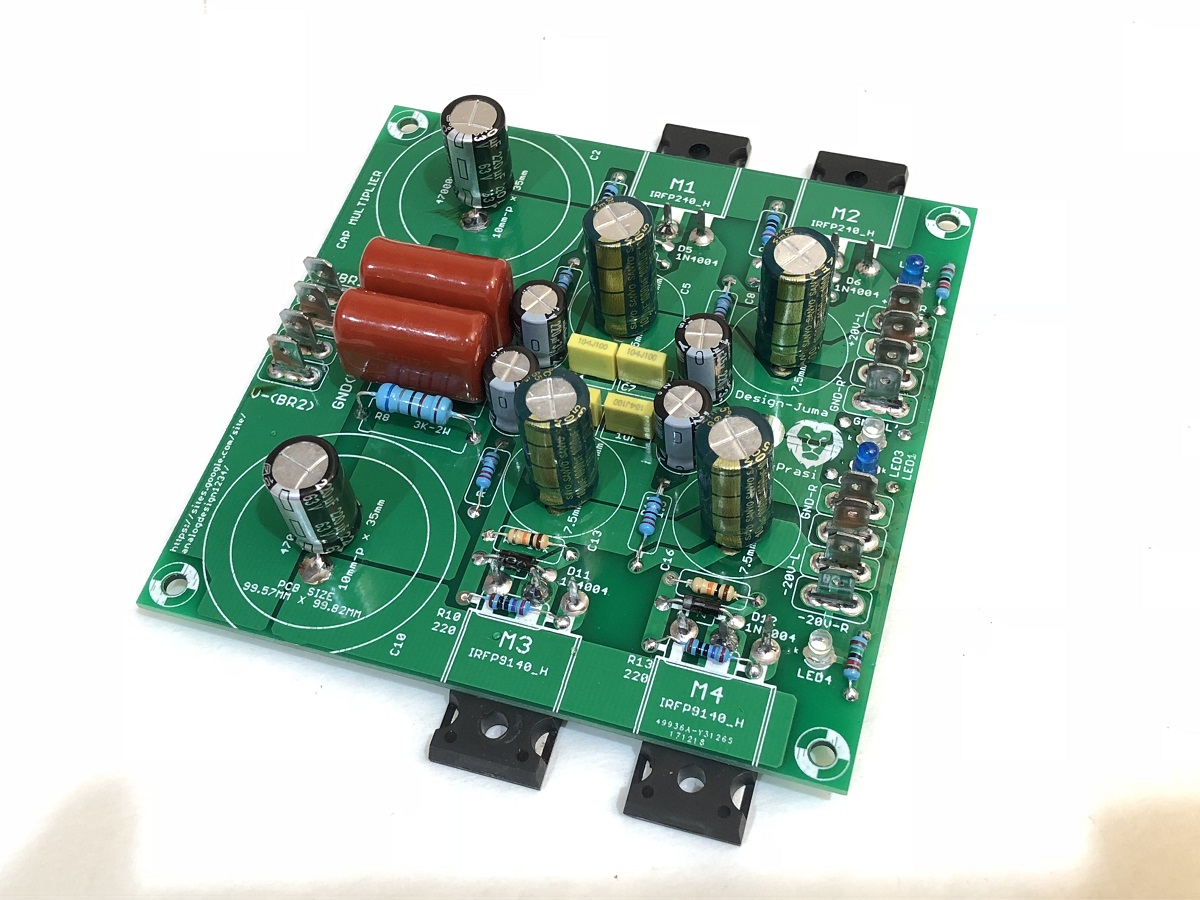
Here is the setup adjusted for +/-28v output. This is nice in that I now have a voltage regulated ultra low ripple PSU that can sustain continuous high current with an arbitrarily adjustable output voltage anywhere from +/-20v to +/-50v. The current will be limited by the SMPS (equivalent to 150w each or 300w total for dual rails). This might be really useful for the 52W ALPHA BB because I need +/-35v rails there. I have not connected the CRC yet - planning on using 10mF 63v CDE caps and 0.22R 3W Panasonic resistors. That's going to be 80mF total caps but for Class A steady current draw, should be fine.
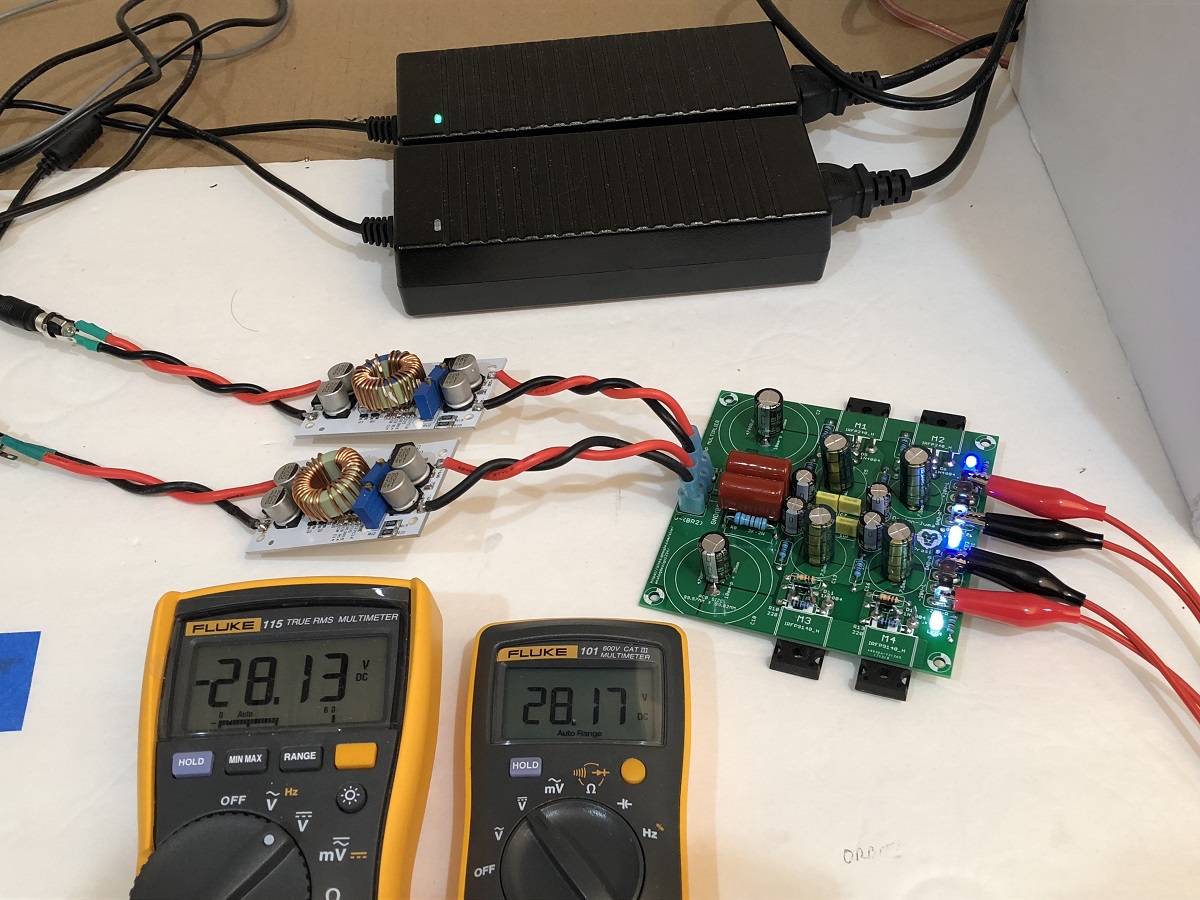
If this works, and I don't see any reason why it won't, the linear trafo and masisve CRC filters that were de rigeur for Class A amps is dead.
Cost wise, this setup is probably quite a bit less than the linear route for equivalent sag-free and ripple-free voltage source for high steady bias Class A amps.
Here is the setup adjusted for +/-28v output. This is nice in that I now have a voltage regulated ultra low ripple PSU that can sustain continuous high current with an arbitrarily adjustable output voltage anywhere from +/-20v to +/-50v. The current will be limited by the SMPS (equivalent to 150w each or 300w total for dual rails). This might be really useful for the 52W ALPHA BB because I need +/-35v rails there. I have not connected the CRC yet - planning on using 10mF 63v CDE caps and 0.22R 3W Panasonic resistors. That's going to be 80mF total caps but for Class A steady current draw, should be fine.
If this works, and I don't see any reason why it won't, the linear trafo and masisve CRC filters that were de rigeur for Class A amps is dead.
Cost wise, this setup is probably quite a bit less than the linear route for equivalent sag-free and ripple-free voltage source for high steady bias Class A amps.
Attachments
Last edited:
Hi Vunce,
I think this is indeed going to work very well for ALPHA20. With assumed max 2amp current at +/-24v at the amp, that’s 28v at the cap multiplier which has typically 4v drop due to Vgs of IRFP240/9240 (some may be 3.3v or so, worst case is 4.5v). So 2amps x 4v = 8w per MOSFET and x 4 = 32W total dissipation. You will need at least something as big as 50in square x 1in aluminum with fins. A large 3mm thick aluminum bottom panel on a cabinet may suffice, if running at say 1.5amps for 24w.
I think this is indeed going to work very well for ALPHA20. With assumed max 2amp current at +/-24v at the amp, that’s 28v at the cap multiplier which has typically 4v drop due to Vgs of IRFP240/9240 (some may be 3.3v or so, worst case is 4.5v). So 2amps x 4v = 8w per MOSFET and x 4 = 32W total dissipation. You will need at least something as big as 50in square x 1in aluminum with fins. A large 3mm thick aluminum bottom panel on a cabinet may suffice, if running at say 1.5amps for 24w.
Prasi is designing a new CRC using low cost bulk 2200uF 50v caps (buy them by the bagfull on Ali) - should be able to get a nice compact low ESR CRC for cheaps.
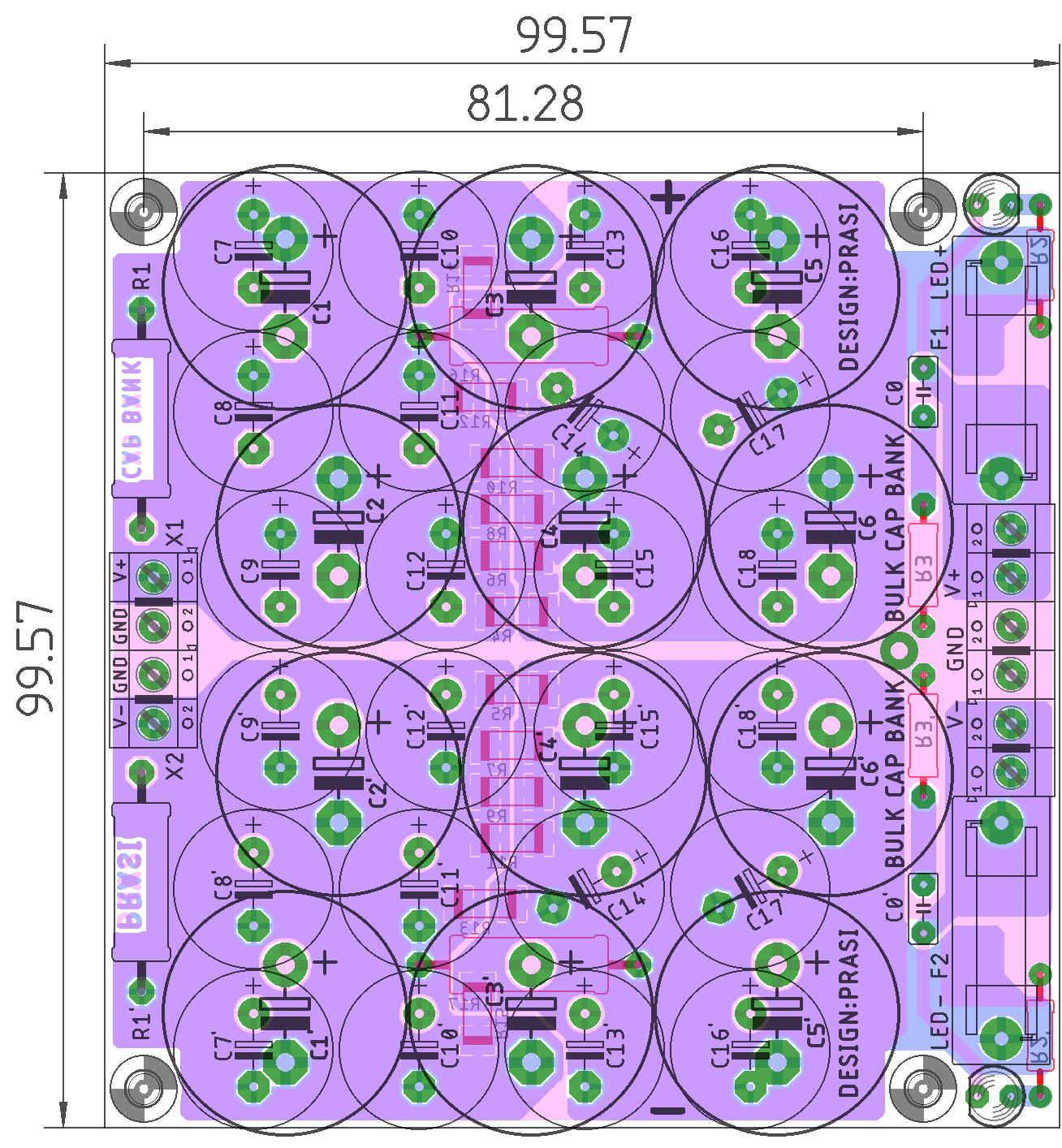
I have asked him to put the common GND connected at the output where the spades are, otherwise not connected. This puts the common GND at clean side of the CRC before connecting the amp.
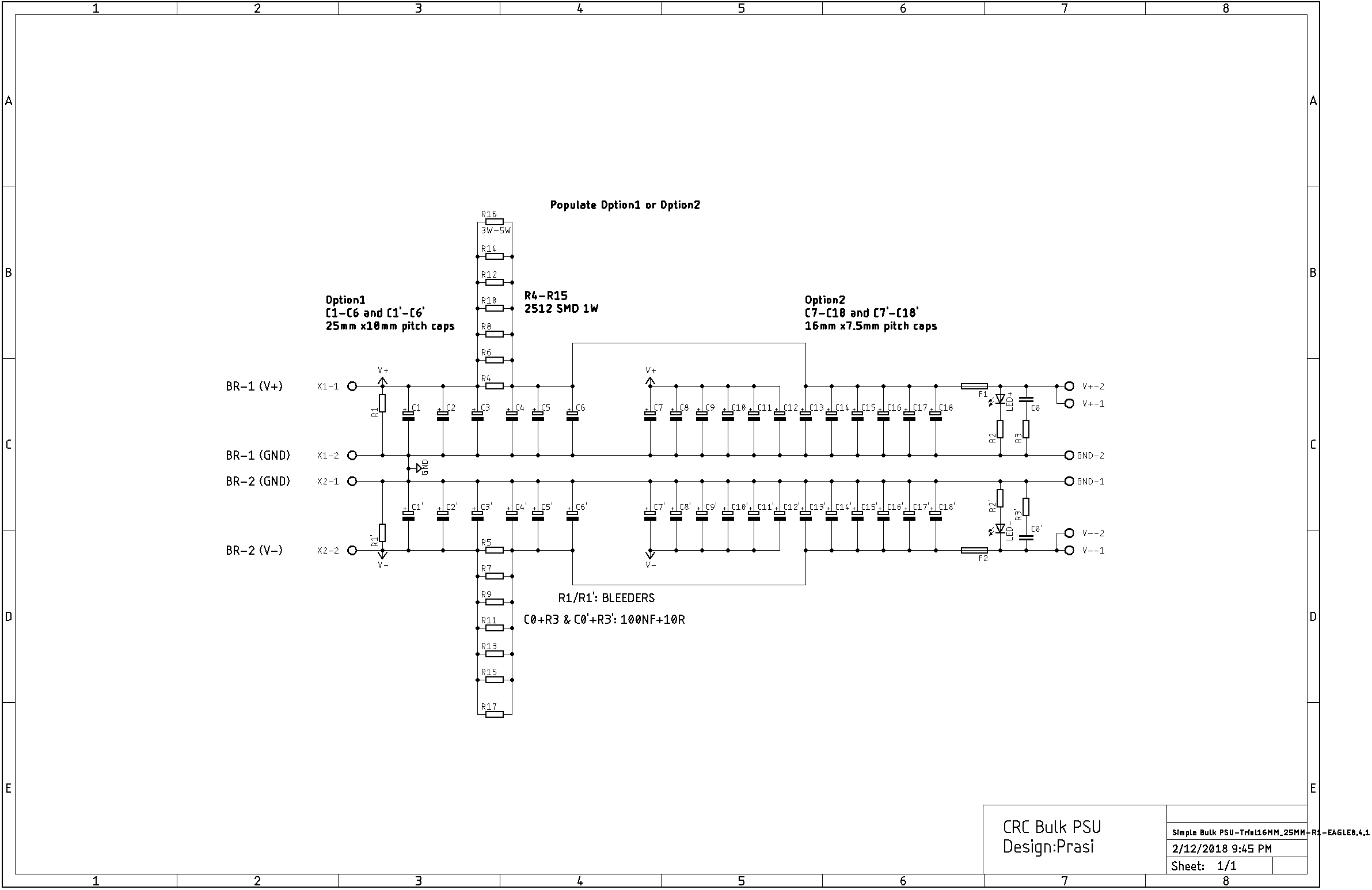
Juma's Easy-Peasy Capacitance Multiplier
Another compact 100mm x 100mm board to go witht he cap Mx board.
I have asked him to put the common GND connected at the output where the spades are, otherwise not connected. This puts the common GND at clean side of the CRC before connecting the amp.
Juma's Easy-Peasy Capacitance Multiplier
Another compact 100mm x 100mm board to go witht he cap Mx board.
I have a bag of Nichi’s looking for a new home, nice.
Hello Vunce,
I will make sure that your caps find their home soon enough!
regards
Prasi
Any specific reason to use 2 of the DC-DC boost boards giving +,0 and 0,- voltages rather than use a single board by giving +,- DC voltages to boost?
Can you help me find me a 10amp +/- DC to DC step up for $14 that accepts as input, cheap SMPS for LED light bars or laptops?
As far as I can tell, a 110/220vAC in and dual rail outputs are available in discrete voltages like +/-24v of +/-35v etc from Connexelectronic for circa $70 as lowest cost option comparable in performance. But I am not sure you would get as low of noise and ripple regulation like my proposed design.
The thing that makes all this possible is the new preponderance of LED lighting which requires medium voltages and high current. This is how we can get an nice low noise 5amp 24v smps for $15. Two of those (not earth grounded), in series gives a potent and low cost Class A PSU. To get higher voltages (up to 55v) just add a $7 DC DC booster. These switch at 400kHz so puts noise way above audio band. It makes components smaller as we need to have a high Q filter for 400kHz not 60Hz. With 60Hz supplies, it is very very tough to suppress an in-band 340vpp noise source (120vac mains) down to below 50uVrms. That requires 6.8M:1 noise rejection ratio (-136dB - what I am getting now) that is within the audio band. To do that takes huge capacitors and big inductors. So let’s just move the AC noise to 400KHz where it’s trivial to filter heavily.
One more advantage of having independent DC DC boosters is ability to fine tune the positive and negative rails for precise balance. That is sometimes the limiting factor to how low the distortion is an amp at high power. Small rail imbalances can cause premature asymmetric clipping. Hanging your hat on preciseness of windings of an unregulated linear trafo will never be that good.
Last edited:
Thanks XRK, but after you referred to the eBay link to the white colored board of DC boost PCB I ordered only one and it took almost 60 days to reach me  . So now after your explanation makes sense to use a pair of these boards for independent setting of the +/- DC voltages. Then I need to order couple of more and wait for another 60 days.
. So now after your explanation makes sense to use a pair of these boards for independent setting of the +/- DC voltages. Then I need to order couple of more and wait for another 60 days.
Can you please give me the link to the dc boost pcb white colored one on aliexpress.com site as sometimes they are faster than eBay.
Another question related to cap multiplier board, can I use 3.3k 2w resistors in place of 3k as listed on the board as I have these in ready stock.
Can you please give me the link to the dc boost pcb white colored one on aliexpress.com site as sometimes they are faster than eBay.
Another question related to cap multiplier board, can I use 3.3k 2w resistors in place of 3k as listed on the board as I have these in ready stock.
Last edited:
- Home
- Amplifiers
- Solid State
- Aksa Lender P-MOS Hybrid Aleph (ALPHA) Amplifier
